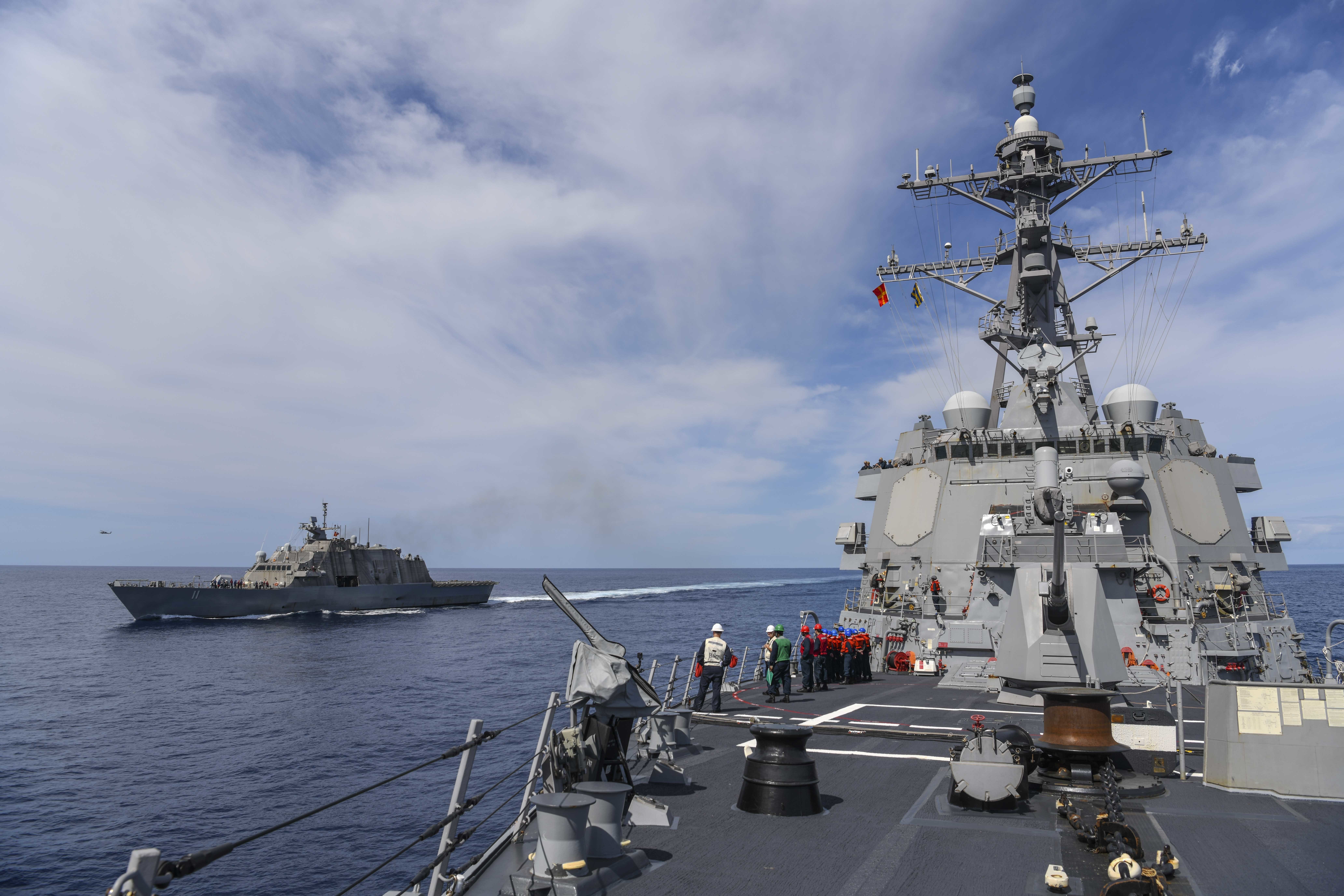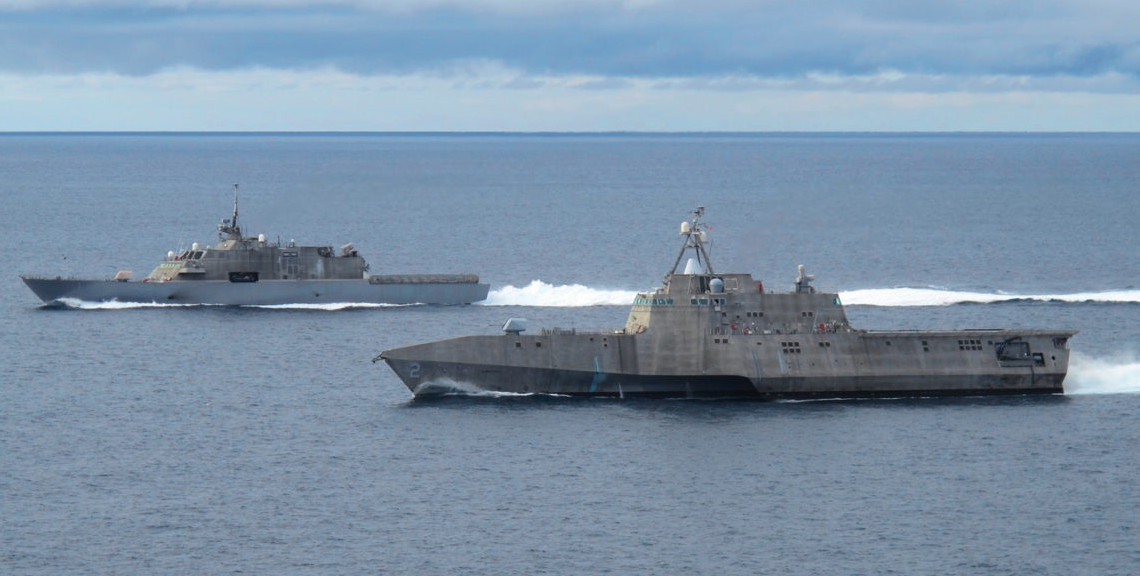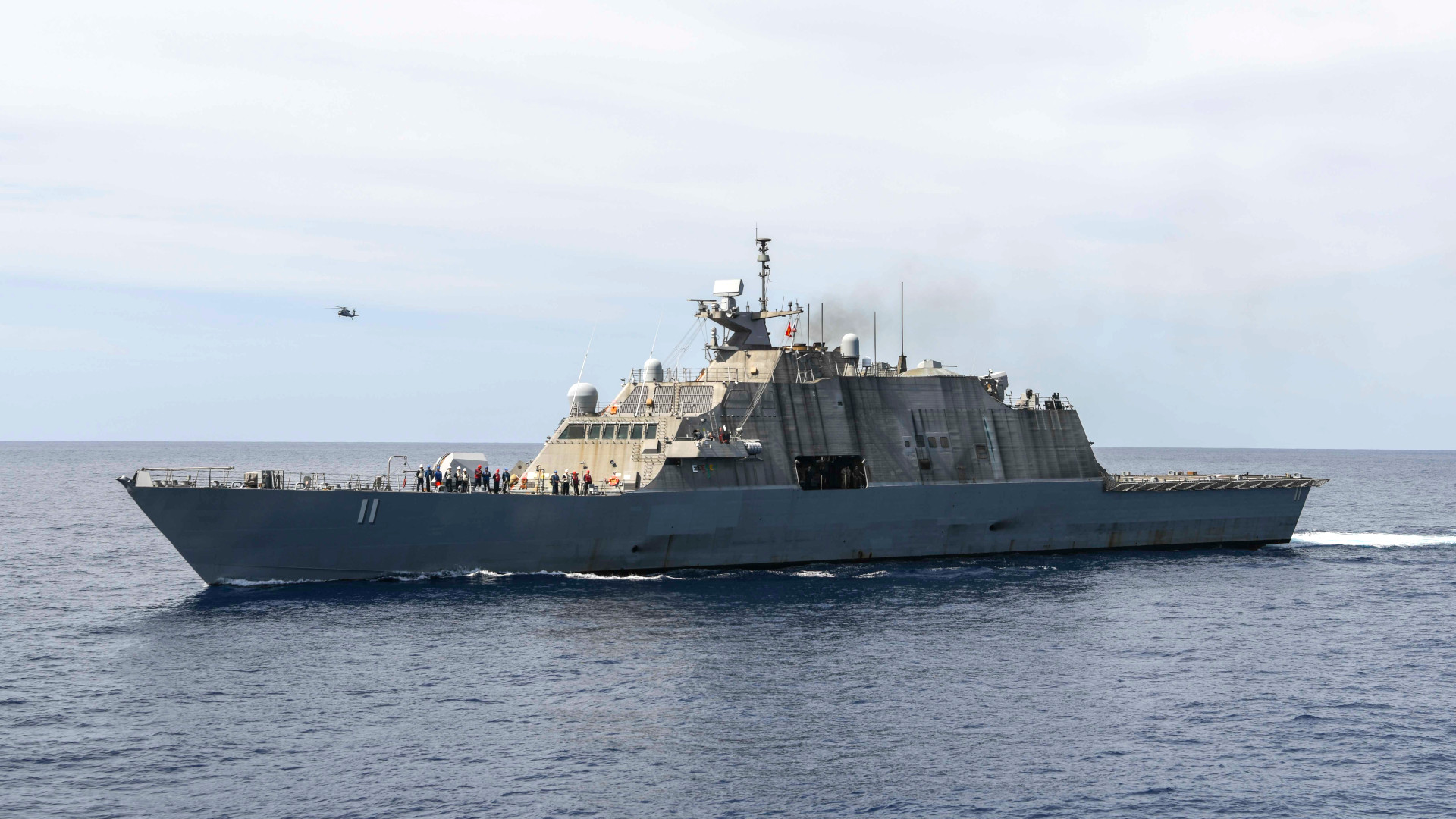For the first time ever, a U.S. Navy Littoral Combat Ship, the Freedom class USS Sioux City, is operating in European waters. This deployment, years in the making, now comes at a time of unprecedented tensions in the region as a result of Russia’s invasion of Ukraine. It also follows the service’s announcement that it is now looking to decommission this ship and all of its other existing examples of this type of LCS following the discovery of a critical design flaw.
The Navy’s Sixth Fleet, which oversees virtually all of the service’s operations in and around Europe and Africa from its headquarters in Italy, announced Sioux City‘s arrival in its area of responsibility today. It’s not clear when the ship left its homeport at Naval Station Mayport in Florida, but the Navy did quietly release pictures of it sailing in the Atlantic Ocean together with the Arleigh Burke class destroyer USS Paul Ignatius yesterday.

“Sioux City’s deployment allows us to integrate the LCS’ unique operational capability into our already diverse fleet,” Vice Adm. Gene Black, head of Sixth Fleet, said in a statement. “The agility of Littoral Combat Ships allows them to operate in both near-shore and open-ocean environments, enhancing our ability to provide security and stability across the European theater.”
“USS Sioux City is a combat ready warship manned by battle-minded Sailors, who are prepared and equipped to execute any mission we are tasked with,” Cmdr. Scott Whitworth, the ship’s commanding officer, added. “This deployment will expand the relevance of these ships, particularly their ability to relieve larger surface combatants in key surface-mission areas.”
What Sioux City, which also has two MH-60S Seahawk helicopters from Helicopter Sea Combat Squadron 22 (HSC 22) embarked onboard, will actually be tasked with during its deployment to Europe remains to be seen. Prior to this, the ship had only ever conducted operational deployments in the Caribbean and the Eastern Pacific Ocean in support of counter-narcotics operations. It had only just returned from one of those deployments in December 2021.

“The ship’s size, speed, and agility allows it to perform maritime security operations, theater security cooperation engagements, and freedom of navigation patrols – keeping critical maritime commerce routes open, deterring conflict and coercion, and providing a comparable ship to strengthen partnerships with other countries,” a Navy press release said.
The Navy’s Freedom and Independence class LCSs have all long struggled to come even close to meeting the service’s expectations since the first examples began to enter service more than a decade ago. The hope had been that LCSs of both classes would provide additional and flexible capacity in various roles, as well as be cheaper and easier to operate than larger surface combatants, particularly through the use of swappable modular mission packages and the assignment of two full crews to each ship.

Last year, the Navy conceded that it was costing it nearly as much to operate an LCS, on average, as a much larger and more capable Arleigh Burke class destroyer. As part of the rollout of its 2023 Fiscal Year budget proposal, the service has now all but confirmed that the modular mission package and dual crew concepts are dead, and says LCSs will no longer be expected to perform anti-submarine warfare (ASW) operations at all. Future Constellation class frigates will be used to meet this ASW requirement instead.
It is interesting to note that Sioux City’s current commander is the head of the ship’s so-called “blue” crew. The commanding officer of its alternate, or “gold,” crew was relieved in February due to a “loss of confidence in his ability to perform his duties” over what was later described as “substantiated sexual harassment concerns.” The Navy had said this relief would cause “no impact to the ship’s mission or schedule.”
The Navy has achieved some limited successes in recent years with the Independence class. This has included arming an increasing number of those ships with Naval Strike Missile (NSM) anti-ship cruise missiles, giving them a much need boost in firepower, and expanding their deployments in the Pacific region. In contrast, the Freedom class ships remain limited in their capabilities and have suffered repeated breakdowns – including one incident that caused $23 million in damage to Sioux City itself – something that eventually exposed a key design flaw in their propulsion system that you can read more about here.

It is not immediately clear whether or not Sioux City has received the fix that was developed to solve the class-wide propulsion system problem, which can prevent these ships from being able to reach their top speed of 40 knots. The Navy announced it had taken delivery of its first Freedom class ship, the future USS Minneapolis-St. Paul, with the fix installed in November. That vessel is expected to be formally commissioned into service in May.
It is this propulsion system issue that has caused the most significant upheaval in the LCS program to date, and which scuttled a plan to send a Freedom class ship to Europe back in 2020. The Navy’s 2023 Fiscal Year budget request has now laid out a plan to decommission all the existing Freedom class ships by the end of 2024. This includes Sioux City, which only entered service in 2018, as well as four others that are even younger.

All of this can only make Sioux City‘s arrival in European waters a bittersweet achievement and raise questions about what its actual operational value in the theater might be, especially at a time of such pronounced crisis in the region. Given the Navy’s now very public views on the utility of its present fleet of Freedom class LCSs, it is hard to see how any of them could send much of a signal, outside of working alongside other much more capable vessels, to Russia or America’s allies and partners in Europe.
Whatever the case, USS Sioux City has now become the first LCS of any type to cross the pond. This could turn out to be the most significant achievement of the ship’s short service life if the Navy is allowed to send it into mothballs next year in as is currently planned.
Contact the author: joe@thedrive.com
